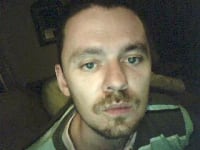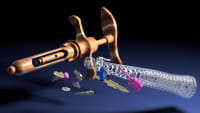Tous les forums
1er cas clinique, vous faites quoi?
15/10/2009 à 19h07
j'ai téléphoné, c'est 576€+ 299€ ht le guide chir + 30€ ht par implant.
C'est donné
15/10/2009 à 20h53
essaye avec le système que propose MIS avec le lego, ça a l'air pas mal et je crois que c'est moins cher que simplant.
16/10/2009 à 00h12
euhhh 3500 euros???? t'as compté que le prix de la matière première?
En dessous de 8000 euros tu risques d'avoir des surprises.
sinon tu bosses en roumanie peut etre?
16/10/2009 à 00h33
romdenice écrivait:
-------------------
> complet su barre au maxillaire......50% d'échecs à 5 ans. A proscrire.
ben alors ? tu étayes tes propos s'il te plait .
18/10/2009 à 23h36
vaucheyjoel écrivait:
---------------------
> euhhh 3500 euros???? t'as compté que le prix de la matière première?
> En dessous de 8000 euros tu risques d'avoir des surprises.
> sinon tu bosses en roumanie peut etre?
et on en est à:
8 ou 9 implants
un summers (avec bio oss ???)
une licence "pas trop cher": 576€+ 299€ ht le guide chir + 30€ ht par implant. C'est donné
reste la prothèse immédiate
la barre fraisée ou coulée pour le définitif
et tout l'accastillage
on a déjà explosé le budget non ???
--
;O)
09/11/2009 à 03h26
Je me demandais ...
tu as aussi prévu quelque chose pour le bridge en bas,
la 36 en mésial ?
et pour la 37 ?
10/11/2009 à 03h06
romdenice écrivait:
-------------------
> complet su barre au maxillaire......50% d'échecs à 5 ans. A proscrire.
Dit, on attend encore tes références
Merci
--
Céramik
10/11/2009 à 14h06
Je ferais un stellite sur coiffes telescopiques Syncone avec 6 implants
renseigne toi aupres de ton representant dentsply-friadent ou fait une petite recherche sur Nonol
c'est une solution économique et tres satisfaisante en tout point de vue
12/11/2009 à 09h39
J Periodontol. 2005 Sep;76(9):1431-5.
A long-term study of implants supporting overdentures as a model for implant success.
Schwartz-Arad D, Kidron N, Dolev E.
Department of Oral and Maxillofacial Surgery, The Maurice and Gabriela Goldschleger School of Dental Medicine, Tel Aviv University, Tel Aviv, Israel. [email protected]
BACKGROUND: Implant-supported overdentures have been a common treatment for edentulous patients for the past 20 years, achieving good clinical results. The purpose of this study was to examine survival and success rates of implants supporting overdentures in the maxilla and mandible and to examine the influence of factors related to patients, implant procedure, implant data, and follow-up period on implant success. METHODS: During a 10-year period (1990 to 2000), 285 implants were placed in 62 patients to support 69 overdentures (seven patients had overdentures in both jaws). Patients ranged in age from 45 to 85 years (mean 64.5 years). The files of 61 patients, including 277 implants supporting 68 overdentures (14 maxillary and 54 mandibular), had measurable radiographic post-exposure follow-up (range 6.63 to 110.93 months, mean 37.93 months) for cervical bone loss (CBL) measurements. Bone loss was measured by radiographic examination in which the mean number of exposed threads in mesial and distal sides of the implant was considered. Implants were rehabilitated by overdentures with bar (N = 52) or ball (N = 16) attachments. RESULTS: Implant survival rate was 96.1% (11/285 did not survive) and total 10-year cumulative survival rate was 95.4% (maxilla, 83.5%, mandible, 99.5%). The success rate was 70.4% (maxilla, 41.9%; mandible, 80.8%) when using Albrektsson et al. success criteria. A logistic regression analysis showed that the maxilla (P <0.0001) and a short follow-up period (up to 5 years) (P = 0.017) were the most influencing factors enhancing CBL. CONCLUSIONS: 1) Survival of implants supporting overdentures was very high; 2) implants supporting overdentures in the maxilla had greater CBL than in the mandible; and 3) new criteria of implant success should be considered.
PMID: 16171428 [PubMed - indexed for MEDLINE]
Je me suis un peu trompé sur les chiffres , le taux de succès est de 41,9% à 10 ans au maxillaire.......à méditer (voir conclusion N°3)
12/11/2009 à 16h01
Merci, mais c'est quand même une seule étude.
Tu as les détails pour type d'implant (longueur, diamêtre, état de surface), densité osseuse, design de la prothèse (attachement, barre), distibution et nombre d'implants ?
Lors de mes formations au Misch Institut et avec Dr Pikos, les taux de succès avec respect des critères bio-mécaniquea du Dr Misch étaient nettement plus élevé.
(Voir livre du Dr Misch, avec au moins 25 références par chapitre).
Tu fais quoi comme solution implantaire pour un maxillaire édenté ?
--
Céramik




